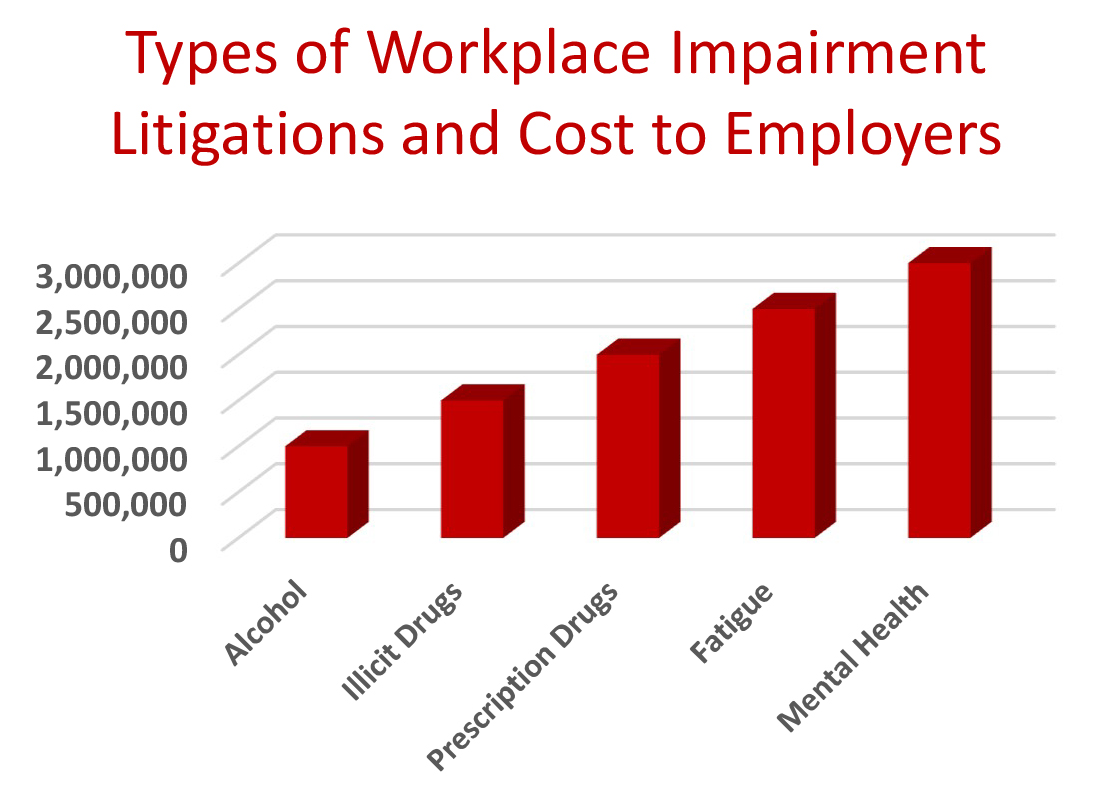White Papers and Press Releases
At Advanced Training Products, we're committed to empowering organizations with the knowledge and tools they need to create safer, healthier workplaces. Our thought leadership resources provide valuable insights into a range of topics, including:
- Total Worker Health® initiatives
- Workplace impairment prevention
- Reasonable suspicion protocols
- Cannabis legalization and its impact on the workplace
Stay informed and stay ahead with our expert analysis and actionable advice.
Keep up with the latest industry news through our press releases below.
Navigating the Legal Landscape of Workplace Impairment: Mitigating Litigation Risks and Fostering a Culture of Accountability
Workplace impairment, encompassing any condition that diminishes an individual's ability to function safely and effectively, presents a significant challenge for employers, extending beyond immediate safety concerns and productivity losses to encompass substantial legal liabilities and reputational damage.
Employers face a range of legal liabilities when workers are impaired on the job. These liabilities can arise from various sources, including negligence where employers have a duty to provide a safe and healthy work environment for their employees. If an employer fails to take reasonable steps to prevent or address workplace impairment, they may be liable for negligence if an employee is injured or harmed because of impairment.
In some cases, employers may be held vicariously liable for the actions of their employees, even if the employer did not directly contribute to the impairment or the resulting harm. This is particularly relevant in cases where the employee's impairment is related to their job duties or the employer's failure to provide adequate training or supervision.
Mastering workplace impairment assessments is now easy and accessible. Certain states like New Jersey have established the role of the Workplace Impairment Recognition Expert ("WIRE") to help address these issues. Advanced Training Products offers an innovative solution: WIRE Certified Training™ - an affordable, online program that equips you with the knowledge and tools to confidently address impairment. This interactive training covers building accountability, recognizing well-being, conducting assessments, and documenting findings. Plus, you'll get a free online algorithm tool for real-time evaluations and seamless documentation. Take control of workplace safety and wellbeing today!
Protecting Employers from Legal Claims
Employers can take proactive steps to protect themselves from legal claims arising from workplace impairment. These measures include:
- To effectively manage workplace impairment risks, develop and implement comprehensive policies defining impairment, outlining expectations, establishing reporting procedures, and guiding intervention and disciplinary actions.
- Train employees and managers on identifying and reporting signs of workplace impairment, including potential consequences.
- Implementing effective prevention and intervention strategies may include substance abuse prevention programs, fatigue management initiatives, and mental health support services.
- Maintaining accurate and detailed documentation of all impairment-related incidents can be crucial for defending against legal claims and identifying areas for improvement in prevention efforts.
The Role of Documentation
Documentation plays a critical role in mitigating litigation risks associated with workplace impairment. Effective documentation serves several purposes:
- Extensive documentation serves as a shield against negligence claims, showcasing the employer's proactive approach to preventing and addressing workplace impairment.
- By documenting impairment incidents, employers can identify trends and patterns that may point to underlying causes or areas for improvement in prevention efforts.
- Supporting disciplinary actions: Documentation provides a factual record to support disciplinary actions taken against employees for impairment-related violations.
- Providing evidence in legal proceedings: In the event of a lawsuit, accurate and detailed documentation can provide crucial evidence to support the employer's defense.

Reputational and Financial Consequences
Beyond financial damage, workplace impairment lawsuits inflict significant harm on employers, including reputational damage, eroded trust, and operational disruptions.
- Workplace impairment lawsuits risk damaging an employer's reputation, impacting brand image, customer relations, and recruitment efforts. This suggests negligence and disregard for employee safety.
- Workplace impairment incidents and subsequent lawsuits can erode employee trust in the company's commitment to their safety and well-being. This loss of trust can lead to decreased morale, reduced productivity, and increased absenteeism.
- Workplace impairment-related lawsuits can disrupt business operations, diverting resources away from core business activities and potentially leading to legal sanctions or regulatory action.
Fostering a Culture of Accountability and Implementing Effective Training: A Two-Pronged Approach to Mitigate Impairment-Related Litigation Risks
- Leadership Commitment: Visible leadership support for safety initiatives and a clear commitment to creating a safe and healthy work environment.
- Open Communication: Encouraging open communication about impairment concerns in a stigma-free environment where employees feel comfortable seeking help.
- Employee Engagement: Involving employees in safety initiatives and encouraging their participation in prevention and detection efforts.
- Consistent Enforcement: Consistent enforcement of workplace impairment policies and procedures, ensuring all employees are held accountable.
- Continuous Improvement: Regularly reviewing safety protocols and incorporating feedback from employees and emerging trends.
- Educate Employees: Provide comprehensive training on company policy, designate and adequately train personnel on impairment recognition, using available resources.
Works Cited
NSC.org/Injury Facts. (2023, December). Retrieved from National Safety Council: https://www.nsc.org/nsc-membership/injury-facts
RAND Institute for Civil Justice and RAND Health. (2009). The Effects of Substance Use on Workplace Injuries. Retrieved December 2023, from ILO.org: https://www.ilo.org/wcmsp5/groups/public/---ed_protect/---protrav/---safework/documents/publica?on/wcms_108415.pdf
Worker Injury Costs. (2021, January 30). Retrieved November 20, 2023, from National Safety Council: https://injuryfacts.nsc.org/work/costs/work-injury-costs/

